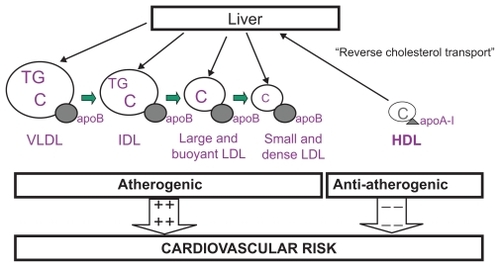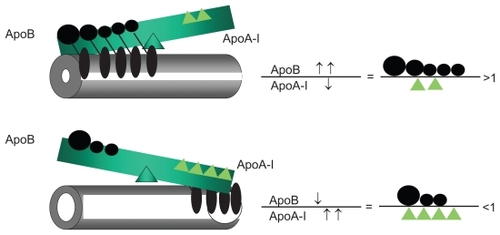Figures & data
Table 1 Risk categories and target levels for total cholesterol/HDL-C, LDL-C/HDL-C and apoB/apoA-I ratios, in primary and secondary prevention, stratified by genderCitation6,Citation7,Citation14
Figure 1 Atherogenic and anti-atherogenic lipoproteins. This diagram shows that there is one single apolipoprotein B (apoB) molecule in each large, buoyant or small, dense particle of very-low-density (VLDL), intermediate-density (IDL), and low-density lipoproteins (LDL). Therefore, apoB represents the total number of potentially atherogenic particles. Apolipoprotein A-I (apo A-I) is the principal protein component in high-density lipoproteins (HDL) and is responsible for starting reverse cholesterol transport. The balance between apoB and apoA-I is indicative of cardiovascular risk: the greater the ratio, the greater the risk.

